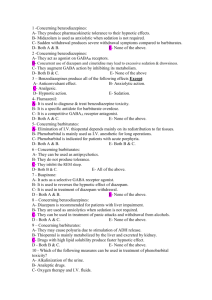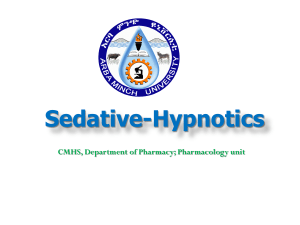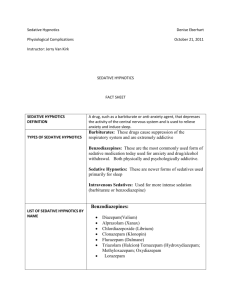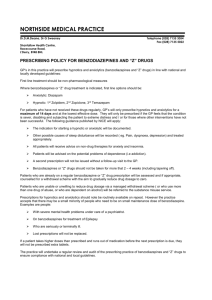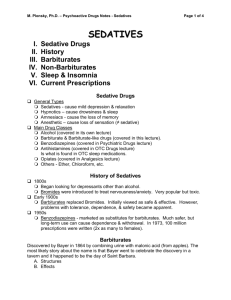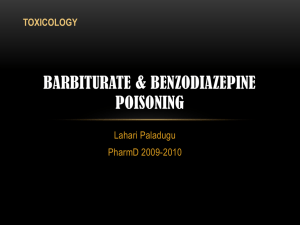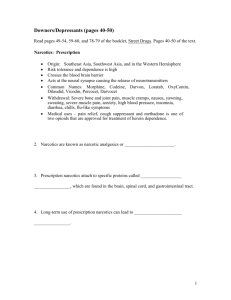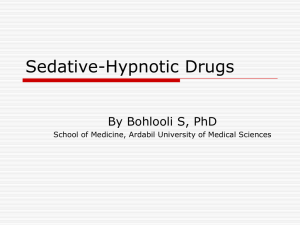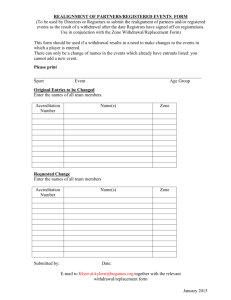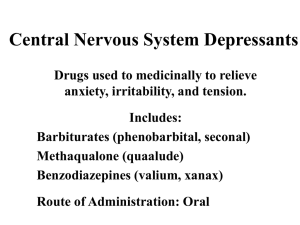What are different names of sedative-hypnotics?
advertisement
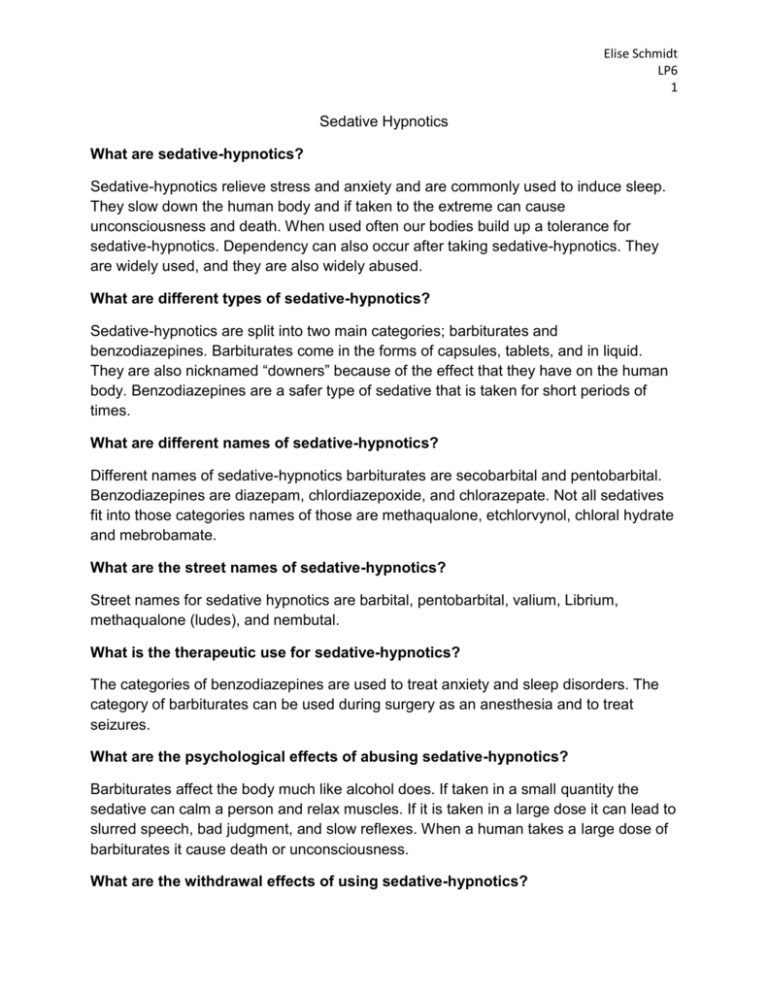
Elise Schmidt LP6 1 Sedative Hypnotics What are sedative-hypnotics? Sedative-hypnotics relieve stress and anxiety and are commonly used to induce sleep. They slow down the human body and if taken to the extreme can cause unconsciousness and death. When used often our bodies build up a tolerance for sedative-hypnotics. Dependency can also occur after taking sedative-hypnotics. They are widely used, and they are also widely abused. What are different types of sedative-hypnotics? Sedative-hypnotics are split into two main categories; barbiturates and benzodiazepines. Barbiturates come in the forms of capsules, tablets, and in liquid. They are also nicknamed “downers” because of the effect that they have on the human body. Benzodiazepines are a safer type of sedative that is taken for short periods of times. What are different names of sedative-hypnotics? Different names of sedative-hypnotics barbiturates are secobarbital and pentobarbital. Benzodiazepines are diazepam, chlordiazepoxide, and chlorazepate. Not all sedatives fit into those categories names of those are methaqualone, etchlorvynol, chloral hydrate and mebrobamate. What are the street names of sedative-hypnotics? Street names for sedative hypnotics are barbital, pentobarbital, valium, Librium, methaqualone (ludes), and nembutal. What is the therapeutic use for sedative-hypnotics? The categories of benzodiazepines are used to treat anxiety and sleep disorders. The category of barbiturates can be used during surgery as an anesthesia and to treat seizures. What are the psychological effects of abusing sedative-hypnotics? Barbiturates affect the body much like alcohol does. If taken in a small quantity the sedative can calm a person and relax muscles. If it is taken in a large dose it can lead to slurred speech, bad judgment, and slow reflexes. When a human takes a large dose of barbiturates it cause death or unconsciousness. What are the withdrawal effects of using sedative-hypnotics? Elise Schmidt LP6 2 When a person uses sedative-hypnotics after awhile they develop a tolerance for the drug; their bodies then need a higher dose. Once a body builds a tolerance for a sedative-hypnotic they can become dependent on the drug. If stopped immediately withdrawal will occur. A person could experience anxiety, tremors, nightmares, insomnia, poor appetite, rapid pulse, rapid breathing, high fever, abnormal blood pressure, and seizures. While taking barbiturates withdrawal symptoms are similar to alcohol. A person could experience seizures or die. Benzodiazepines have withdrawal effects but are not as severe as barbiturates. A withdrawal from benzodiazepines would cause extreme discomfort. If a person is taking a short acting medication such as Xanax withdrawal symptoms will begin 12 to 24 hours after last dose and will reach climax at 24 to 72 hours. When a person takes a longer acting medication such as Valium withdrawal symptoms begin 24 to 48 hours after last dose and climax within 5 to 8 days. Elise Schmidt LP6 3 Reference Page Abuse, N. I. (1984). As a matter of fact...Sedative Hypnotics. Retrieved from Division of Alcohol and Drug Abuse: http://www.well.com/user/woa/fsseda.htm Hanson, G. R., Venturelli, P. J., & Fleckenstein, A. E. (2012). Drugs and Society. Jones & Bartlett Learning. Medication and Drug Guide . (2011, Novemeber 29). Retrieved March 2012, from AllPsych: http://allpsych.com/drugs.html School, H. M. (2010, July 13). Substance Abuse (Depressants or Sedative-Hypnotic Drugs). Retrieved March 17, 2012, from Community Connect to Research: http://www.connecttoresearch.org/publications/98
